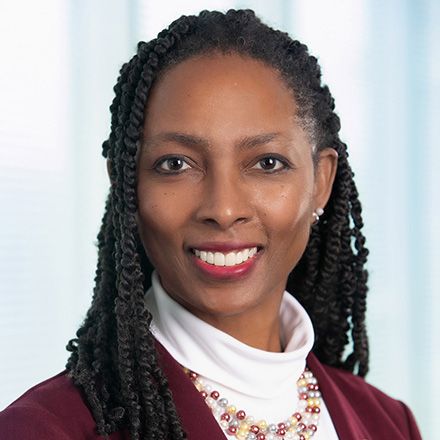Article
The Match reminds us of the importance of a strong family medicine workforce
Author(s):
Primary care doctors are community health leaders – and we need more of them in more communities.
On March 17, history was made. The largest class ever of medical students and graduates across the country found their homes in family medicine through the 2023 National Resident Matching Program® Main Residency Match Program (NRMP Match).
Tochi Iroku-Malize, MD, MPH, MBA, FAAFP
AAFP

Match Day is a milestone day for medical students as they prepare to complete their medical degree and transition into their medical specialties. This year, 4,530 medical students and graduates matched into family medicine residency programs. Family medicine offered 5,107 residency positions, 172 more than in 2022, and 13.6% of positions offered in all specialties.
This year’s Match results give us reason to celebrate, but we cannot forget that the U.S. faces both a pressing workforce and health equity problem: We need more primary care doctors, and we need them practicing in underserved communities where a family physician or primary care doctor is often the only one trained to meet their health care needs. According to a new primary care scorecard authored by the American Academy of Family Physicians’ (AAFP) Robert Graham Center, while about one in three U.S. practicing physicians are primary care physicians, only one in five physicians who completed their residency from 2012 to 2020 were practicing primary care two years later.
As a family physician, I know the significance of matching into family medicine. I also know the Match is a timely reminder that we need to invest in programs that will lead more medical students to choose primary care specialties – especially family medicine. Thankfully, there are federal programs and regulatory policies that have the potential to move this needle forward and bolster our workforce.
The American Academy of Family Physicians, the organization I represent, has long supported programs that invest in the primary care workforce, such as the Teaching Health Center GME Program. We are also urging policy makers to design federal GME programs that meet the health care needs of our nation – including assessing how federal funds are allocated and whether they are addressing physician shortages – especially in rural and underserved areas. For instance, any expansion of federal GME slots should be targeted specifically toward hospitals and programs in areas and specialties of need and invest in efforts to diversify the physician workforce to improve access to health care, reduce spending, and better meet the needs of our diverse population.
The pathway to primary care is rewarding, but not without challenges. The rising level of medical student debt disproportionately affects underrepresented and low-income students and limits their representation in the health care workforce. Reducing student debt will diversify the physician pipeline and help reduce physician shortages. We have urged Congress to expand funding for federal programs, such as the National Health Service Corps program, which incentivizes physicians to go into primary care practice by providing loan forgiveness. We also support legislation like the Resident Education Deferred Interest (REDI) Act, which allows medical residents to defer their student loans interest free during residency.
Amid a tripledemic that has changed the way we look at health care, family physicians have been fearless leaders in their communities – on the front lines treating patients amid increasing financial challenges. But we can’t do this alone. As our future physicians leave medical school and start their residencies, one thing is clear: Health care stakeholders at every level must work together quickly to achieve rapid growth in our family medicine workforce to fulfill the diverse needs of our patients. With this in mind, we hope our nation’s leaders will work with physicians to implement tangible solutions that strengthen and sustain our nation’s health care workforce, and ensure access to comprehensive, affordable care in all communities.
Tochi Iroku-Malize, MD, MPH, MBA, FAAFP, is a family physician in Long Island, New York, and president of the American Academy of Family Physicians.





